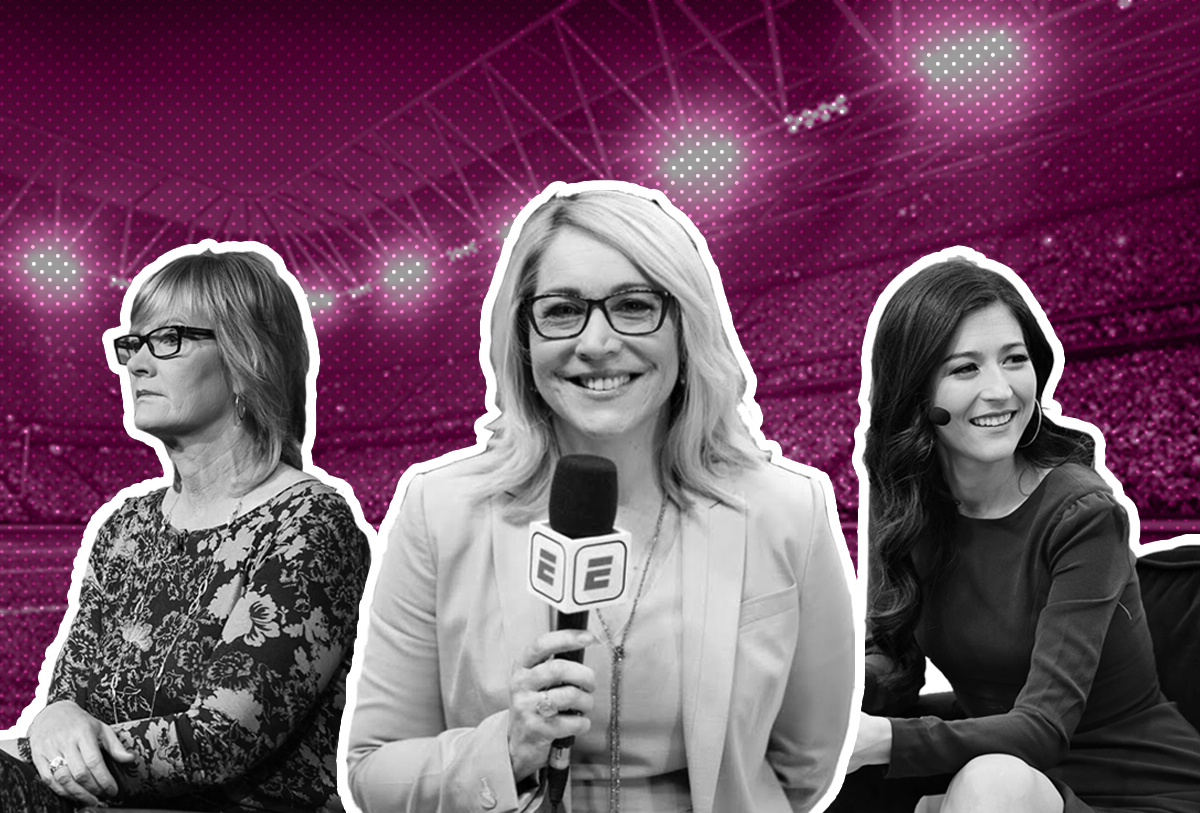A commentary on the #MoreThanMean campaign against cyber harassment
“This is why we don’t hire any females unless we need our c**** sucked or our food cooked.”
“Hopefully this sk*nk Julie DiCaro is Bill Cosby’s next victim. That would be classic.”
“Sarah Spain is a b**** I would hate f***.”
In 2016, sports journalists Julie DiCaro and Sarah Spain sat down with a handful of randomly selected men who were asked to read aloud some of the terrible comments these women have received. The campaign, called #MoreThanMean, was created by the same group behind the podcast Just Not Sports. It was intended to bring attention to cyber harassment, and the impact of words regardless of them being read online through a screen.
Fast-forward to today and this campaign is still just as relevant as it was five years ago. It is widely known that women are severely underrepresented in sports media — both as athletes and reporters. However, as audiences become more and more interested in women’s sports coverage in general, a rise in women sports journalists is also expected.
Unfortunately, this trend hasn’t caught on with sports reporting. A 2018 report by the Institute for Diversity and Ethics in Sport (TIDES) that looked at 75 different sport-media companies found that only 11.5 per cent of sports reporters were women. What makes this statistic even more pitiful is the fact that the percentage has stayed the same since 2012 – until this year, when a slight rise was seen.
In 2021, TIDES finally reported a rise in the percentage of women sports reporters, moving it up to 14.4 per cent: a dismal growth of less than three per cent in the same number of years. That increase still earned gender hiring an F grade in the Institute’s Sports Media Racial and Gender Report Card.
So why exactly are there so few women sports reporters? Some may argue it is due to poor treatment from male coworkers or even harassment from the athletes. However, most sports journalists describe a good relationship with their coworkers. In fact, some even attribute the gains women have made in the industry to the support of their male counterparts.
If we look back, those comments read to Julie DiCaro and Sarah Spain came from listeners and readers. The hate women sports journalists receive is one of the driving factors that push them out of the industry. A 2014 study by the International Women’s Media Foundation found that nearly one third of female journalists consider leaving the profession because of online attacks and threats. Unfortunately, this trend is only expected to get worse because 90 per cent of those women reported an increase in online threats over the past five years.
And how do we repay these women for having to deal with all this extra harassment? By paying them less than their male coworkers, of course. A report by The Washington Post stated that with five years of experience, male journalists earn 13.5 per cent more than women journalists with the same experience .
How can we expect women to continue in an industry where the fans and the management both treat them unfairly? What’s more is that women actually want to work in sports journalism. For example, at Arizona State University, 25.1 per cent of sports journalism majors are women. However, that number isn’t matched in the field because of inequity women face once they enter the workforce.
Encouraging and protecting women is important for the future of sports journalism. One way to promote women in the field is through representation. The 2021 report by TIDES found that women only represented 36.3 per cent of upper management. It’s important to increase the number of women in positions of power so they can help lift others with them. A mentorship program is a great way for women to support other women. It helps to talk to someone who has experienced the same difficult situations, such as online harassment.
Another strategy could be access to mental health services by the employer. Many media companies already have legal teams for the physical safety of their reporters. However, having constant hurtful and hateful comments being hurled at you is difficult to ignore no matter how hard one may try. Sports media should be providing all their employees, both male and female, with mental health services to help them cope and deal with the hate.
Audiences can even make a change while sitting at home. Women sports journalists receive negative comments all the time, but that doesn’t prevent people from adding positive ones to the mix. Take the time to reply to your favourite woman reporter if you enjoyed their call on a game or one of their articles. That support might remind them why they do the job they do and get them through their more difficult days.
Photograph by Catherine Reynolds




